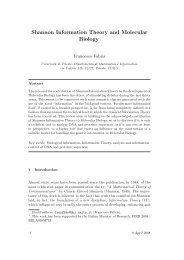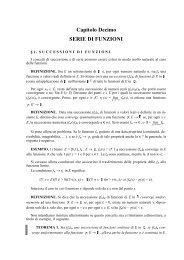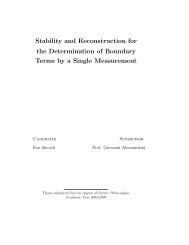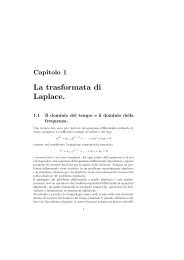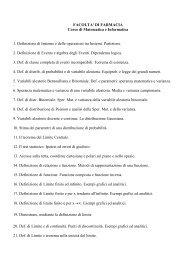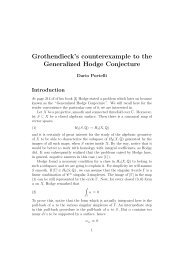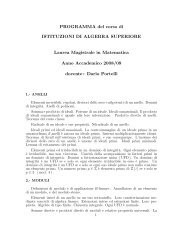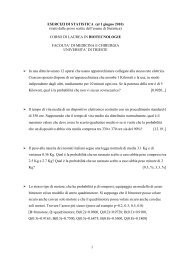INTRODUCTION TO ALGEBRAIC GEOMETRY Note del corso di ...
INTRODUCTION TO ALGEBRAIC GEOMETRY Note del corso di ...
INTRODUCTION TO ALGEBRAIC GEOMETRY Note del corso di ...
You also want an ePaper? Increase the reach of your titles
YUMPU automatically turns print PDFs into web optimized ePapers that Google loves.
38 Mezzetti9.1. Definition. φ is a regular map or a morphism if(i) φ is continuous;(ii) φ preserves regular functions, i.e. for all U ⊂ Y (U open and non–empty) andfor all f ∈ O(U), then f ◦ φ ∈ O(φ −1 (U)):X↑φ −1 (U)φ−→φ|−→Y↑Uf→K<strong>Note</strong> that:a) for all X the identity map 1 X : X → X is regular;b) for all X, Y , Z and regular maps X φ → Y , Y ψ → Z, the composite map ψ ◦ φ isregular.An isomorphism of varieties is a regular map which possesses regular inverse,i.e. a regular φ : X → Y such that there exists a regular ψ : Y → X verifyingthe con<strong>di</strong>tions ψ ◦ φ = 1 X and φ ◦ ψ = 1 Y . In this case X and Y are said to beisomorphic, and we write: X ≃ Y .If φ : X → Y is regular, there is a natural K–homomorphism φ ∗ : O(Y ) →O(X), called the comorphism associated to φ, defined by: f → φ ∗ (f) := f ◦ φ.The construction of the comorphism is functorial, which means that:a) 1 ∗ X = 1 O(X);b) (ψ ◦ φ) ∗ = φ ∗ ◦ ψ ∗ .This implies that, if X ≃ Y , then O(X) ≃ O(Y ). In fact, if φ : X → Y is anisomorphism and ψ is its inverse, then φ ◦ψ = 1 Y , so (φ ◦ψ) ∗ = ψ ∗ ◦φ ∗ = (1 Y ) ∗ =1 O(Y ) and similarly ψ ◦ φ = 1 X implies φ ∗ ◦ ψ ∗ = 1 O(X) .9.2. Examples.1) The homeomorphism φ i : U i → A n of Proposition 3.2 is an isomorphism.2) There exist homeomorphisms which are not isomorphisms. Let Y = V (x 3 −y 2 ) ⊂ A 2 . We have seen (see Exercise 7.2) that K[X] ≄ K[A 1 ], hence Y is notisomorphic to the affine line. Nevertheless, the following map is regular, bijectiveand also a homeomorphism (see Exercise 7.1):φ : A 1 → Y such that t → (t 2 , t 3 );{ yφ −1 : Y → A 1 is defined by (x, y) → x if x ≠ 00 if (x, y) = (0, 0).9.3. Proposition. Let φ : X → Y ⊂ A n be a map. Then φ is regular if and onlyif φ i := t i ◦ φ is a regular function on X, for all i = 1, . . ., n (where t 1 , . . ., t n arethe coor<strong>di</strong>nate functions on Y ).Proof. If φ is regular, then φ i = φ ∗ (t i ) is regular by definition.



